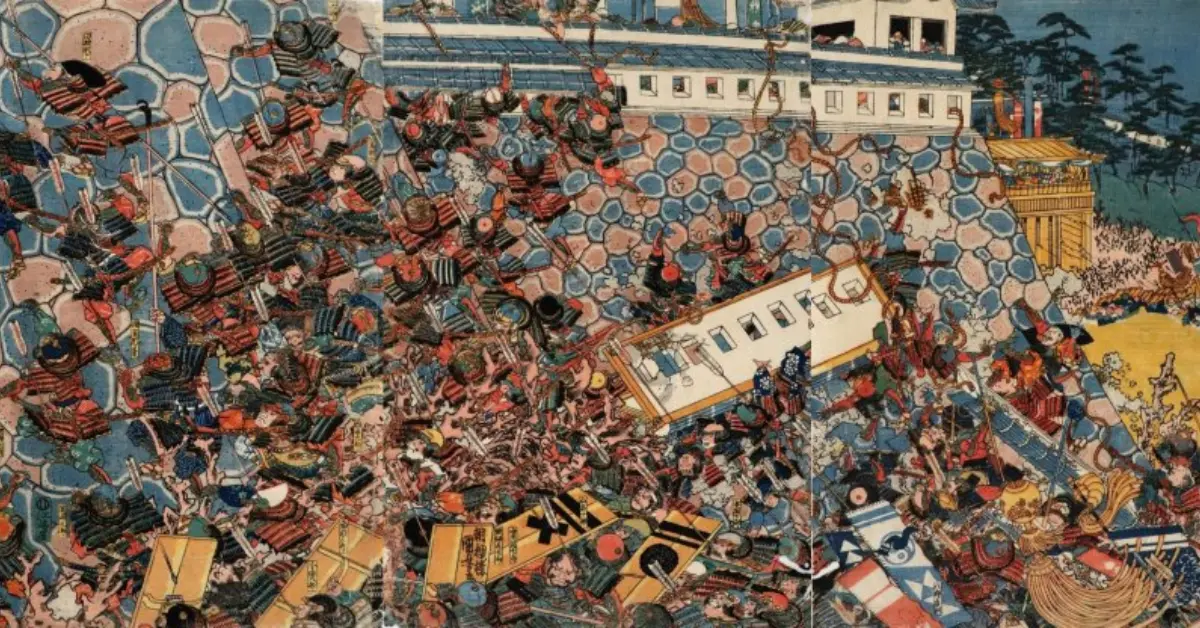The Genkō War, a pivotal civil war in Japanese history, began with Emperor Go-Daigo’s ambition to overthrow the Kamakura Shogunate and restore imperial rule, leading to the first uprising in 1331. This was followed by a series of fierce battles, including Go-Daigo’s capture and exile, and the defection of Ashikaga Takauji to the emperor’s cause.
The climax came with the Siege of Kamakura in 1333, resulting in the fall of the Kamakura Shogunate and the mass suicide of the Hōjō clan. In the aftermath, Emperor Go-Daigo returned to Kyoto, initiating the Kenmu Restoration to reestablish imperial authority.
Key Takeaways
- Emperor Go-Daigo’s ambition to restore imperial rule led to the Genkō War, challenging the Kamakura Shogunate’s authority.
- The first uprising in 1331 resulted in Go-Daigo’s capture and exile, but it set the stage for further resistance against the shogunate.
- Ashikaga Takauji’s defection to Emperor Go-Daigo’s side was a critical turning point, significantly bolstering the imperial forces.
- The Siege of Kamakura in 1333 marked the end of the Kamakura Shogunate, highlighted by the mass suicide of the Hōjō clan.
Prelude to Genko War
The Genkō War was characterized by a profound struggle between the Kamakura Shogunate and Emperor Go-Daigo. In the early 14th century, tensions escalated between the reigning Kamakura Shogunate, led by figures like Hōjō Moritoki and Hōjō Mototoki, and Emperor Go-Daigo.
Go-Daigo, unlike his predecessors, aspired to restore imperial rule and reduce the shogunate’s influence. This ambition set the stage for the ensuing conflict.

In 1324, the Shōchū Incident exposed the emperor’s initial plans to overthrow the shogunate, but these plans were thwarted, leading to heightened tensions. The succession dispute further aggravated the situation. Following the death of Prince Kuninaga in 1326, the Shogunate favored Prince Kazuhito (later Emperor Kōgon) for the throne, against Go-Daigo’s wishes, who preferred his son, Prince Morinaga.
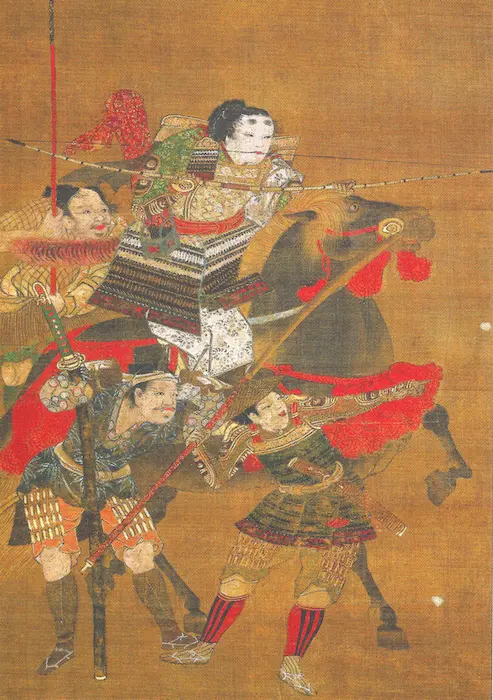
In 1331, Emperor Go-Daigo, undeterred by past failures, initiated the first uprising against the Kamakura Shogunate. He sought to capitalize on the internal divisions and discontentment within the shogunate.
The Battles of Genko War
First Uprising
The first major confrontation occurred in 1331. Emperor Go-Daigo, having rallied his vassals and anti-Hōjō samurai, plotted to overthrow the Kamakura Shogunate.
However, the plan was compromised when Fujiwara Sadafusa, a trusted adviser, betrayed the emperor, alerting the shogunate. The shogunate’s troops swiftly moved to suppress the uprising, forcing Go-Daigo to flee Kyoto.
Go-Daigo sought refuge at Kasagi, a secluded monastery strategically overlooking the Kizu River. Despite a valiant stand, the Siege of Kasagi ended with Go-Daigo’s capture and subsequent exile to the Oki Islands.
This first uprising laid the groundwork for continued resistance, with Go-Daigo’s son, Prince Morinaga, and loyalists like Kusunoki Masashige keeping the flame of rebellion alive.
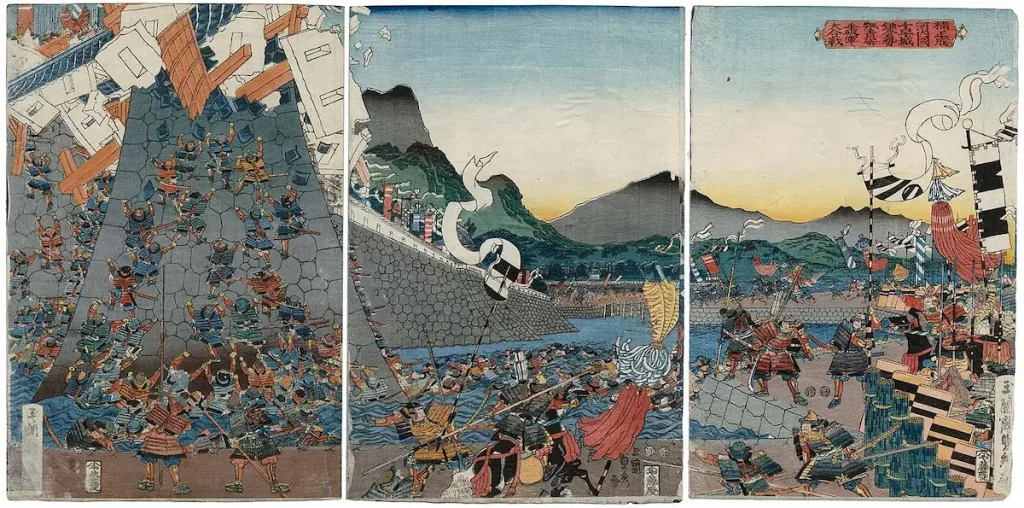
Second Uprising
In 1333, a pivotal turn occurred. Emperor Go-Daigo escaped the Oki Islands with the assistance of Nawa Nagatoshi. Gathering new forces at Mount Senjō in Hōki Province, he sparked a second uprising.
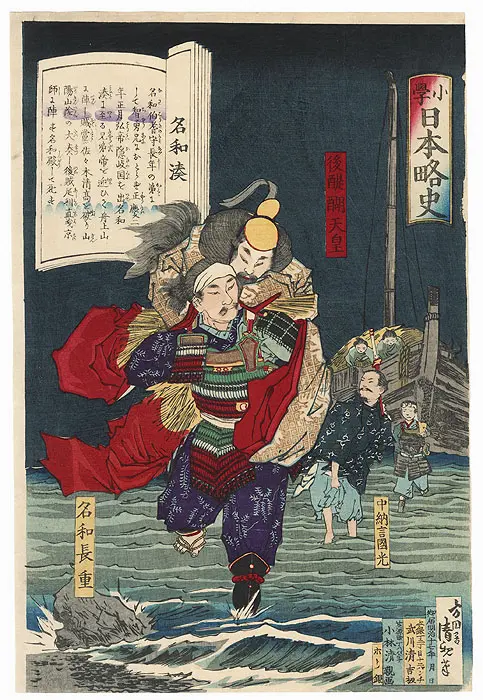
This period saw significant battles, including the defeat of Sasaki Kiyotaka at the Battle of Mount Senjōsan, signaling a growing momentum for the Imperial forces.
One of the most crucial developments was Ashikaga Takauji’s defection to Emperor Go-Daigo’s side. Ashikaga, a chief general of the Hōjō, had been dispatched to suppress the second uprising but instead joined the emperor’s cause.
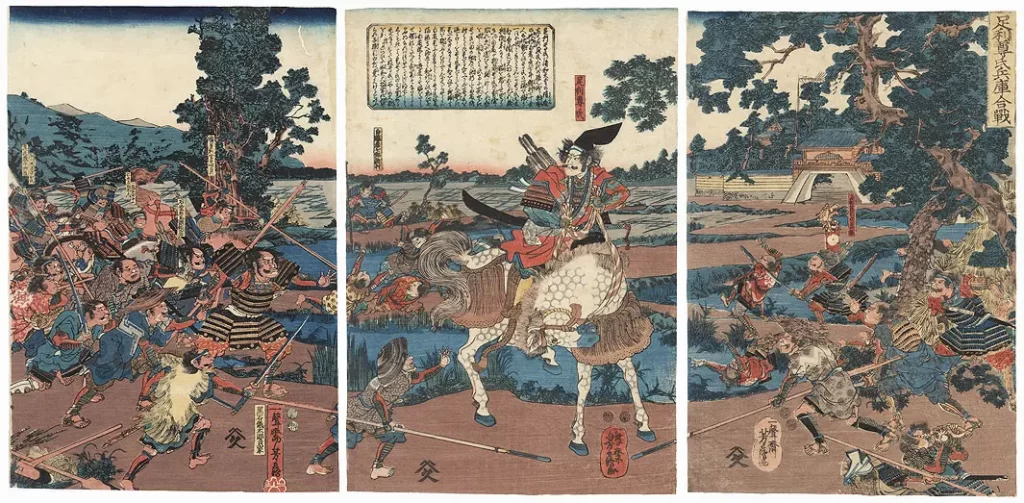
This defection, influenced possibly by his leadership ambitions and the declining authority of the Hōjō, significantly bolstered the Imperial forces.
Under the command of Nitta Yoshisada, a series of victories ensued for the Imperial side. The Siege of Chihaya, and the Battles of Kotesashi, Kumegawa, and Bubaigawara marked a string of successes, weakening the Kamakura Shogunate’s forces.
Fall of Kamakura
The climax of the Genkō War was the Siege of Kamakura in early July 1333.
Nitta Yoshisada led the Imperial forces and destroyed the city and the Kamakura bakufu. Facing defeat, the Hōjō clan, including prominent regents like Hōjō Sadaaki and Hōjō Takatoki committed a mass suicide This marked the decisive end of the Kamakura Shogunate, concluding the battles that had raged across Japan.
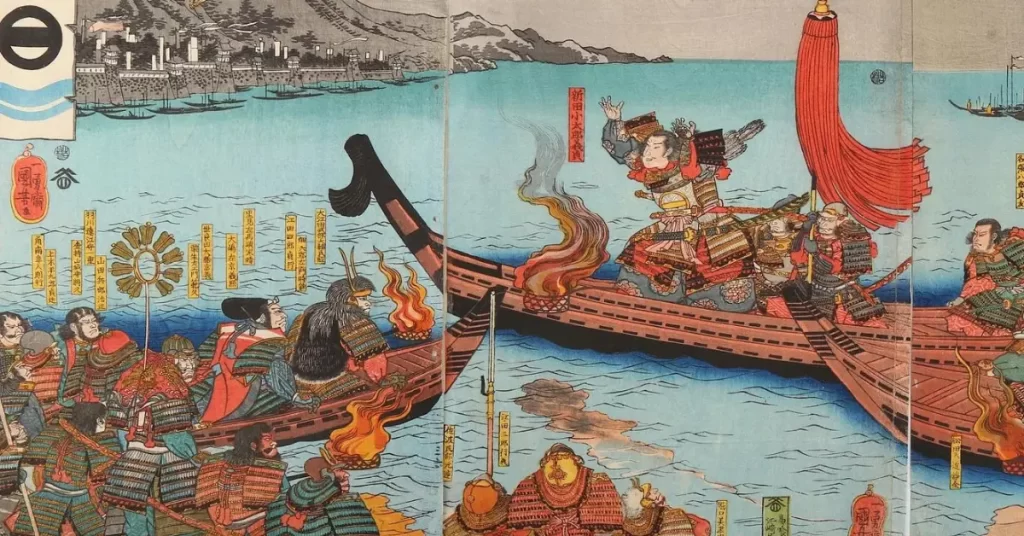
Aftermath of Genko War
Emperor Go-Daigo’s Return
In the wake of the shogunate’s collapse, Emperor Go-Daigo made a triumphant return to Kyoto on June 5, 1333. His return marked the restoration of imperial rule. Go-Daigo issued an order rejecting Kōgon as emperor, and began the Kenmu restoration.
Kenmu Restoration
Emperor Go-Daigo’s attempted to consolidate power and implement reforms aimed at restoring imperial authority and reducing the influence of the samurai class. However, these reforms faced various challenges, including resistance from the samurai and internal imperial court politics. The restoration was short-lived. Within a period of three years, Ashikaga Takauji will overthrow Go-Daigo and establish the Ashikaga Shogunate
Long-term Impact
The Genkō War and its aftermath had a profound impact on Japanese history. It marked the end of the Kamakura period and set the stage for the Muromachi period. The war demonstrated the changing nature of power, from a feudal system dominated by the shogunate to a more complex interplay of imperial and samurai authority.
Frequently Asked Questions
What was the Genko War about?
The Genkō War was a civil war in Japan, centered around Emperor Go-Daigo’s efforts to overthrow the Kamakura Shogunate and restore imperial rule.
When did the Genko War occur?
The Genkō War occurred from 1331 to 1333.
What were the causes of the Genko War?
The causes of the Genkō War included Emperor Go-Daigo’s desire to restore imperial power, political disputes over imperial succession, and growing discontent with the Kamakura Shogunate’s rule.
Who won the Genkō War?
Emperor Go-Daigo and his supporters won the Genkō War, leading to the fall of the Kamakura Shogunate.
Further Readings
- The Cambridge History of Japan: Volume 3 (Medieval Japan)

